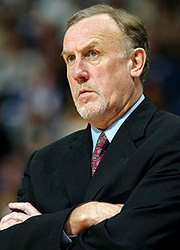 The PGA Tour makes its annual trek to Houston this week for the Shell Houston Open at the Tournament Course at Redstone Golf Club. It’s always a fun event and well worth attending.
The PGA Tour makes its annual trek to Houston this week for the Shell Houston Open at the Tournament Course at Redstone Golf Club. It’s always a fun event and well worth attending.
After a rocky divorce from The Woodlands and its popular TPC Course, as well as a difficult transition period in which most of the best PGA Tour players avoided the event, the 2010 tournament attracted the best field in the history of the event.
The 2011 tournament does not have quite a strong a field (four of the the top 10 players in the World Rankings are playing as opposed to six last year), but the field is as good as any of the non-major, non-World Golf Championship event on the Tour.
Phil Mickelson (6 in the World Rankings), Lee Westwood (2), Matt Kuchar (9) and Steve Stricker (10) are the highest ranking players participating this year, while defending SHO champ Anthony Kim (41), Ernie Els (13), Retief Goosen (18), Francesco Molinari (16), Padraig Harrington (36) , Hunter Mahan (19), Charl Schwartzel (26), and defending British Open champ Louis Oosthuizen (24) are other well-known Tour members in the field. In addition, local fan favorites and past SHO winners Fred Couples, Stuart Appleby and Robert Allenby (30) are playing again this year.
The Houston Open is one of the oldest events on the PGA Tour and the event has really got its mojo back after picking up the week-before-the-Masters-date on the Tour schedule five years ago. The first tournament was in 1922, which ties the event with the Texas Open as the third oldest non-major championship on the PGA Tour behind only only the Western Open (1899) and the Canadian Open (1904). This is the sixth Houston Open to be played on the Tournament Course at Redstone and the ninth event overall at Redstone, which hosted its first three Houston Opens on the club’s Jacobson-Hardy Course while the Tournament Course was being built.
This year’s strong field is further confirmation that the tournament’s move to the week-before-The Masters-date was the right one (32 participants in the SHO will play in the Masters the following weekend). The Houston Golf Association continues to do a fine job of promoting the tournament with Tour players by grooming the Tournament Course as much as possible to resemble the conditions that they will face next the following weekend at Augusta National. However, the course is a flat-land course that bears little resemblance to the hilly venues of Augusta, so that grooming only works to a limited extent.
Moreover, even with its superior conditioning, the Tournament Course is a not a favorite of either players or spectators. Although is has a decent variety of interesting holes, the routing of the course is an unmitigated disaster, with 16 of the holes separated by a long walk and a drainage ditch from the 1st and 18th holes, the driving range and the clubhouse. Unfortunately, there is not much the Houston Golf Association can do about that routing problem, so let’s just hope that the course’s superior conditioning and the SHO’s attractive tune-up date for The Masters keeps prompting the top players to overlook the course’s less appealing characteristics. Here are a few tips on watching the tournament at Redstone.
The following are a few of the back stories to follow during the tournament:
Houston will be well-represented in the field. Steve Elkington, and The Woodlands’ Jeff Maggert and Roland Thatcher lead the local veteran contingent, while two new faces – Johnattan Vegas and Bobby Gates, both from The Woodlands – are legitimate contenders for a top-10 finish this week. Vegas already won the Bob Hope Classic earlier this season, and both he and Gates already have two top-10 finishes each this season. Vegas and Gates are students of Kevin Kirk, who is the head pro at The Woodlands Golf Performance Center and another in Houston’s long legacy of outstanding golf instructors.
Although Mickelson and Tiger Woods still are ranked higher in the World Rankings, Matt Kuchar is currently the most consistent American player on the PGA Tour and arguably the most consistent player on the Tour over the past two years (although Bay Hill winner Martin Laird is coming on strong in that category). And, as with many things in golf, there is a Houston connection to Kuchar’s rise to the top.
Defending SHO champion Kim and British Open champion Oosthuizen are both coming back from injuries that cost them a portion of theie 2010 season. Although neither has contended yet in the 2011 season, both players are extraordinary talents who could burst into contention at any moment.
Scott Stallings, who contended at The Transitions Tournament a couple of weeks ago – is a top-20 Tour player in driving distance and maintains an interesting blog Chief Executive Golfer and likely will be passing along thoughts about his experience during the tournament.
Three of the top-10 drivers in terms of distance on the Tour will be playing, J.B. Holmes (4), Angle Cabrera (5) and Transitions Tournament champion Gary Woodland (9).
Although I’ve had my doubts that the HGA would be able to turnaround the SHO at Redstone, I’m happy to be wrong on that score. Houston has a rich golfing tradition and the HGA is a fine charitable organization. It’s going to be another great week at Redstone, so sit back and enjoy the SHO!
Like this:
Like Loading...
 It’s been awhile since I’ve passed along another in my series of posts on the best of Houston’s many fine golf courses (see the side panel to the right for the other courses reviewed to date), so what better way to start the week than to take a look at one of Houston’s most venerable tracts, River Oaks Country Club.
It’s been awhile since I’ve passed along another in my series of posts on the best of Houston’s many fine golf courses (see the side panel to the right for the other courses reviewed to date), so what better way to start the week than to take a look at one of Houston’s most venerable tracts, River Oaks Country Club.


/cdn.vox-cdn.com/uploads/chorus_image/image/18553287/20130621_kkt_at5_932.0.jpg)

 S
S
